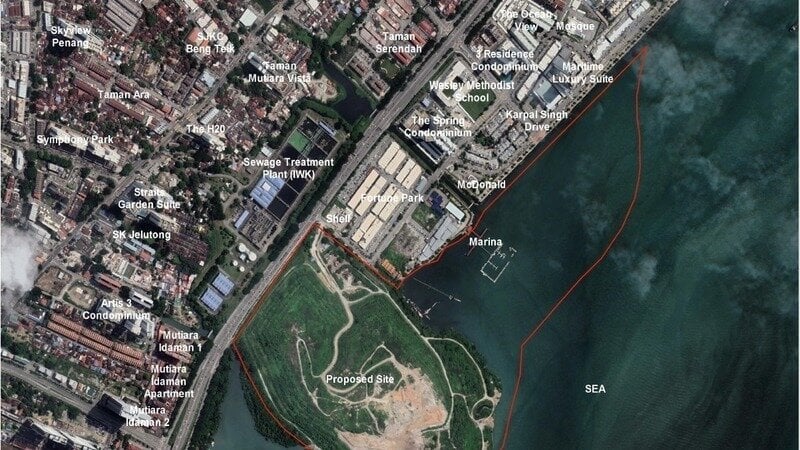GEORGE TOWN — Residents against the Jelutong landfill reclamation project have refuted Penang Chief Minister Chow Kon Yeow’s claim that Middle Banks, an ecologically sensitive seagrass bed nearby, will not be affected.
The Protect Karpal Singh Drive action committee (ProtectKarpal), formed by residents who oppose the proposed reclamation, point out that scientific evidence, and even the developer of the project, have noted the sensitivity of Middle Bank in the project’s environmental impact assessment (EIA) report.
“The proposed project involves reclaiming 28.3 ha of sea using 5.2 million cubic meters of sand, perilously close to, and encroaching to, the sanctuary’s boundaries.
“In fact, the developer’s own EIA report admitted that the project site ‘including the proposed reclamation area, is located at the Middle Bank’,” said the group in a statement.
Middle Bank is a 10 sq km seagrass meadow off the eastern coast of Jelutong, where the landfill that juts out into the sea is slatted for reclamation as part of a rehabilitation project to turn the area into prime real estate.
Its ecological value lies in its 429 species of seagrass, commercial fish, birds, marine mammals, turtles, molluscs and arthropods, as recorded by the Penang Institute in a report, Protecting Penang’s Marine Biodiversity: Establishing the Middle Bank Marine Sanctuary.
ProtectKarpal also said that even if Chow’s claims of no physical encroachment on Middle Banks is true, there will still be devastating impacts from reclamation activities on the area’smecosystem.
“Even without direct overlap, the cascade of indirect impacts—sedimentation, habitat destruction, and disrupted currents—will devastate this fragile ecosystem,” the residents’ group added.
They highlighted Penang Institute’s report that emphasised the Middle Bank’s ecological significance and the urgent need for its protection, stating that this was the view of the state government’s own think tank.
Middle Bank also acts as a natural “defence system” for Penang by providing coastal protection, stability to the seabed, and climate change mitigation as it can sequester carbon by up to 40 times more effectively than forests, the ProtectKarpal group noted, citing research done on the seagrass bed.
“It supports artisanal fisheries, purifies water, and shields our shores from erosion and tsunamis, as demonstrated during the 2004 disaster,” the group added.
They reiterated their previous call to the state government to gazette the Middle Bank as a marine sanctuary; to stop the reclamation project, and to extend the timeline of the Jelutong landfill’s rehabilitation to five to 10 years so as to allow “in-situ rehabilitation” which would eliminate the need for reclamation.
The group also wants the state government to engage scientists, conservationists, and local communities to find a balanced solution that protects Penang’s marine heritage while addressing development needs.
“This is not a choice between progress and preservation—urban development and conservation can coexist. The Middle Bank sustains our fisheries, shields our shores, and fights climate change. We cannot afford to lose it,” the group said.
Yesterday, Chow assured that the reclamation project would “not damage” the marine ecosystem at Middle Bank as the project would not encroach into the seagrass meadow.
He said the environmental approval is part of the EIA, now on public display, and called upon members of the public to air their grievances on the project during the public feedback sessions to the developer. – March 29, 2025


